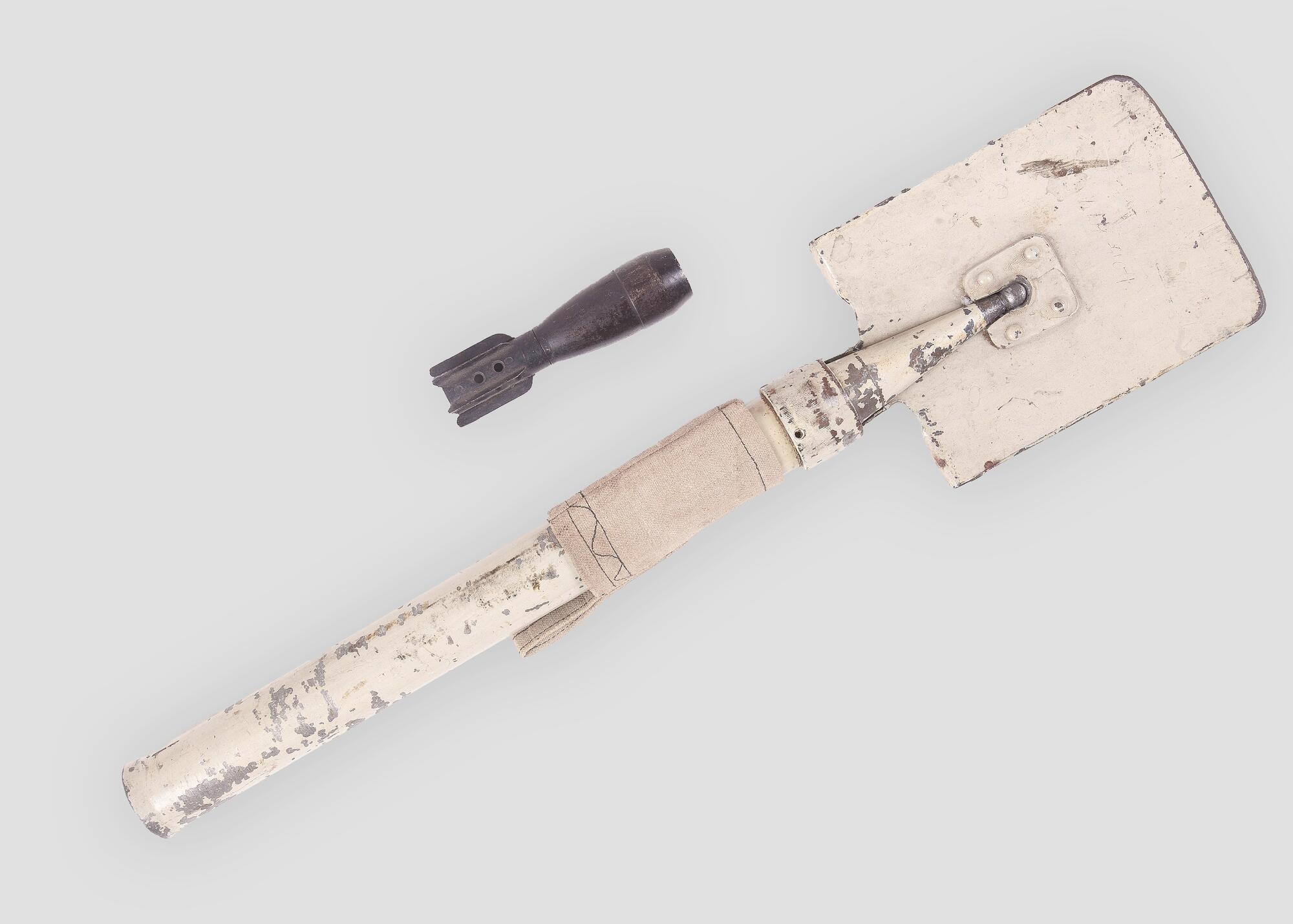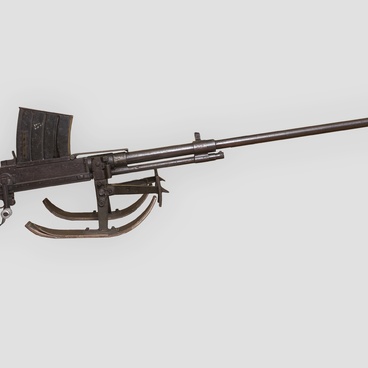The Karelian Front Museum houses a copy of a very rare and interesting Soviet weapon — the 1937 model 37mm spade mortar. This unusual exhibit is a hybrid of a small infantry shovel and a small-caliber (37mm) mortar. The idea of equipping an infantryman with additional firepower to the assigned small arms has always attracted gunsmiths. Grenades were not suitable in this case, since they had a throwing range of no more than 40 meters.
At the end of 1939, the 13th Research Institute of the People’s Commissariat of Munitions came up with an idea to combine a trench infantry tool — a small sapper shovel — with a light 37mm mortar. This resulted in the creation of the universal infantry weapon, which was called a “Platoon mortar spade of 37 mm caliber” and which, according to its creators, was supposed to perform several functions at once. As stated in the design documents, this mortar fired 37mm fragmentation mines at a range of 60–250 meters, which were carried by the soldier in a special bandolier.
The design seemed very simple and reliable, therefore, an order was issued in the beginning of September 1941, to set up production and make 10,000 37mm spade mortars for the army by the end of that same month. In December, the production volume needed to be increased to 100 thousand. In total, 250 thousand units were supposed to be delivered by the end of the year.




